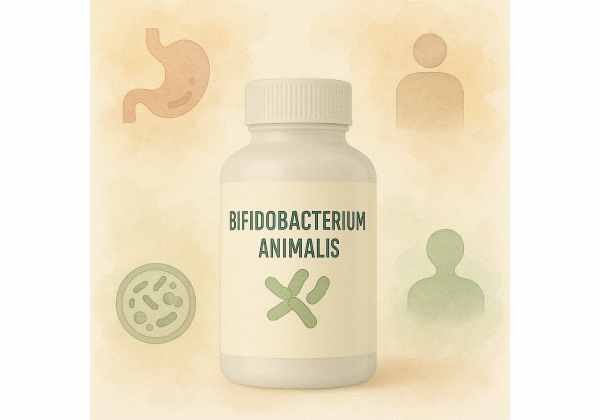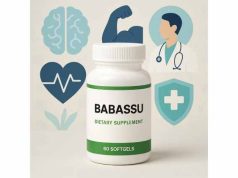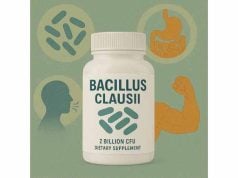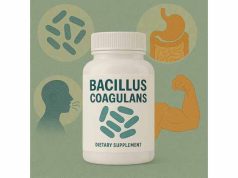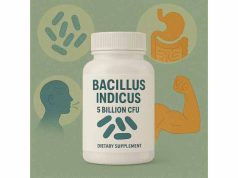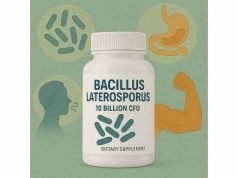Bifidobacterium animalis is a powerful probiotic species trusted worldwide for its digestive, immune, and metabolic health benefits. Naturally found in the guts of humans and many animals, it’s a cornerstone of gut wellness supplements and functional foods. Its reputation comes from science-backed abilities to improve bowel regularity, boost immune defenses, restore the microbiome after antibiotics, and even support healthy cholesterol and metabolic balance. Whether you’re seeking relief from occasional digestive issues, supporting recovery after illness, or simply aiming for daily wellness, understanding how B. animalis works—and how to use it safely—can help you make informed choices for your health.
Key Takeaways
- Bifidobacterium animalis improves digestive regularity, comfort, and post-antibiotic recovery.
- This probiotic helps strengthen immune responses and may support cholesterol and metabolic health.
- Generally safe for daily use in healthy adults and children, with rare, mild side effects.
- Best results come from consistent, high-quality supplementation and a balanced, fiber-rich diet.
- Consult your healthcare provider before use if you are immunocompromised, critically ill, or have severe allergies.
Table of Contents
- Bifidobacterium animalis Introduction and Core Health Functions
- Biological Mechanisms and Scientific Actions of Bifidobacterium animalis
- Evidence-Based Health Benefits and Practical Uses of Bifidobacterium animalis
- Comprehensive Safety Assessment, Potential Side Effects, and Interactions of Bifidobacterium animalis
- Dosage, Best Practices, Timing, and Forms of Bifidobacterium animalis
- Frequently Asked Questions About Bifidobacterium animalis
Bifidobacterium animalis Introduction and Core Health Functions
Bifidobacterium animalis is a species of beneficial bacteria from the Bifidobacterium genus, naturally colonizing the gastrointestinal tract of humans and various mammals. This probiotic has risen to prominence because of its resilience, ability to survive gut transit, and broad spectrum of science-supported benefits.
What is Bifidobacterium animalis?
- B. animalis is a Gram-positive, anaerobic bacterium—meaning it thrives in environments without oxygen, like the human colon.
- It exists as two main subspecies: Bifidobacterium animalis subsp. lactis and Bifidobacterium animalis subsp. animalis. Both are used in supplements, with “lactis” especially well-studied for human health.
- Notably, B. animalis adapts well to supplement production, remaining stable through manufacturing, storage, and exposure to stomach acid, which ensures it reaches the intestines alive.
How Does Bifidobacterium animalis Differ from Other Probiotics?
- Resilience: B. animalis tolerates harsh conditions (acidity, bile salts) better than many other probiotics.
- Fiber Fermentation: It specializes in digesting complex plant fibers and resistant starches that our bodies can’t process, producing beneficial short-chain fatty acids (SCFAs) in the process.
- Synergy: This species works synergistically with other beneficial bacteria, supporting a balanced and diverse gut microbiome.
Natural Sources and Modern Supplementation
- Naturally found in the gut, B. animalis also appears in certain yogurts, kefirs, and fermented foods, though levels can vary.
- Supplements provide standardized, clinically validated doses for targeted health outcomes and are widely available as capsules, powders, and multi-strain blends.
Who Might Benefit from Bifidobacterium animalis?
- Adults and children seeking to improve or maintain digestive regularity
- Those recovering from antibiotic or illness-induced microbiome disruption
- Individuals looking for immune support, allergy relief, or metabolic wellness
- People with mild lactose intolerance, as certain strains may assist with dairy digestion
A Cornerstone of Gut Health
Bifidobacterium animalis is increasingly recognized as an essential “foundation” probiotic. It’s often recommended as a base strain in daily multi-strain probiotic regimens and is supported by extensive clinical research for its health-promoting effects.
Biological Mechanisms and Scientific Actions of Bifidobacterium animalis
Bifidobacterium animalis influences health by interacting with our bodies on multiple biological fronts. Here’s a closer look at the mechanisms that make it so effective:
1. Advanced Fermentation of Prebiotics and Dietary Fiber
- B. animalis ferments non-digestible carbohydrates (prebiotics) in the colon, generating SCFAs such as acetate and propionate.
- SCFAs: These metabolites fuel colon cells, support gut barrier integrity, and lower the intestinal pH, which discourages the growth of harmful pathogens.
2. Inhibiting Harmful Bacteria and Crowding Out Pathogens
- This probiotic adheres to the gut lining, creating a protective barrier and outcompeting unwanted bacteria for resources.
- It also produces natural antimicrobials, further supporting gut health and reducing the risk of infections.
3. Immune System Regulation
- By interacting with the gut-associated lymphoid tissue (GALT), B. animalis can stimulate the production of protective antibodies, such as IgA, and increase regulatory T cells that keep immune reactions in balance.
- Its SCFA production helps maintain an anti-inflammatory environment, which can lower the risk of overactive immune responses or allergies.
4. Metabolic Health and Cholesterol Management
- Some studies suggest B. animalis helps modulate cholesterol metabolism, lowering LDL (“bad”) cholesterol and supporting healthy blood sugar levels.
- Its SCFAs also play a role in regulating hormones related to appetite and metabolic function.
5. Lactose Digestion and Tolerance
- Certain strains produce lactase, the enzyme required to digest lactose, making dairy more tolerable for some with mild lactose intolerance.
6. Supporting the Gut-Brain Axis
- By reducing inflammation and supporting a healthy gut barrier, B. animalis may have positive effects on mental well-being, stress resilience, and cognitive clarity.
Summary Table: Mechanisms of Action
| Mechanism | Impact |
|---|---|
| Fiber fermentation | Produces SCFAs, supports gut lining |
| Pathogen inhibition | Reduces harmful bacteria, maintains balance |
| Immune regulation | Enhances antibody production, lowers inflammation |
| Metabolic benefits | Supports cholesterol, glucose, and weight |
| Lactose digestion | Improves dairy tolerance |
| Gut-brain support | May positively impact mood and stress |
Bifidobacterium animalis’ multi-targeted approach is why it remains a favorite among health professionals and wellness seekers alike.
Evidence-Based Health Benefits and Practical Uses of Bifidobacterium animalis
Bifidobacterium animalis is among the most researched probiotics in the world, with benefits spanning digestive, immune, and metabolic health. Here’s how it can be used for real-world wellness:
1. Promoting Regular Bowel Movements and Reducing Constipation
- B. animalis consistently improves stool frequency and comfort in people with occasional constipation, including children, adults, and seniors.
- Benefits often become noticeable within one to two weeks of consistent supplementation.
2. Supporting Recovery After Antibiotics and Illness
- Antibiotic therapy and gastrointestinal infections can disrupt the balance of beneficial bacteria. B. animalis helps speed the return to a healthy, resilient microbiome.
- Reduces the risk of antibiotic-associated diarrhea and helps prevent overgrowth of harmful microbes.
3. Enhancing Immune Function and Allergy Defense
- Clinical studies show that regular supplementation may reduce the frequency and duration of common colds, especially in children and people under stress.
- May help reduce allergic responses and skin irritation in people prone to sensitivities.
4. Metabolic and Cardiovascular Support
- Some research links B. animalis supplementation with lower total and LDL cholesterol levels, improved glucose balance, and even modest support for weight management when paired with a healthy lifestyle.
5. Helping with Mild Lactose Intolerance
- Certain strains help break down lactose in the digestive tract, making dairy foods more comfortable for those with mild sensitivities.
6. Supporting Mental Wellness and Stress Resilience
- Early evidence suggests positive impacts on the gut-brain axis, with improvements in mood, anxiety, and stress responses for some users.
7. Everyday Wellness Maintenance
- Many people use B. animalis daily to maintain digestive comfort, resilience, and overall vitality as part of a preventive wellness routine.
Summary Table: Evidence-Based Uses
| Health Application | How B. animalis Helps | Strength of Evidence |
|---|---|---|
| Digestive regularity | Improves bowel movement, relieves constipation | Strong (clinical trials) |
| Post-antibiotic care | Restores gut flora, prevents diarrhea | Strong |
| Immune support | Boosts defenses, reduces infections | Moderate–strong |
| Metabolic wellness | Lowers cholesterol, supports blood sugar | Moderate |
| Lactose intolerance | Helps digest dairy, reduces symptoms | Moderate |
| Mood/stress | Early research on gut-brain benefits | Preliminary |
Bifidobacterium animalis stands out as a versatile and reliable choice for comprehensive gut and immune support.
Comprehensive Safety Assessment, Potential Side Effects, and Interactions of Bifidobacterium animalis
Bifidobacterium animalis enjoys an outstanding safety record, making it a preferred probiotic for everyday use in both adults and children. While side effects are rare and generally mild, being aware of potential reactions, contraindications, and interactions ensures safe, effective supplementation for every user.
1. General Safety Overview
- B. animalis is designated as “Generally Recognized as Safe” (GRAS) in the United States and meets similar regulatory standards globally.
- Its robust safety profile is supported by decades of use in supplements and foods, including clinical trials with diverse populations.
2. Common and Rare Side Effects
Most users tolerate B. animalis well, but as the gut microbiota adjusts, mild symptoms may appear, especially in the first few days:
- Digestive changes: Temporary bloating, mild gas, or soft stools are the most frequent, typically resolving within a week.
- Stool frequency: Some may notice an increase in bowel movements—a desired effect for those with irregularity or constipation.
Serious side effects are exceptionally rare. Should you experience persistent discomfort, blood in the stool, or high fever, stop supplementation and consult a healthcare professional promptly.
3. Groups Requiring Extra Caution
Certain populations should use B. animalis only under medical supervision:
- Immunocompromised individuals: Those with weakened immune systems due to chemotherapy, organ transplants, or advanced HIV/AIDS face a rare but increased risk of systemic infection.
- Hospitalized or critically ill patients: Probiotics can be beneficial, but only with doctor oversight.
- Infants and young children: Use only child-specific formulations and consult a pediatrician for dosing and safety.
- People with severe gastrointestinal disease or short bowel syndrome: Medical guidance is essential due to increased susceptibility.
4. Allergic Reactions
Allergy to B. animalis itself is extremely rare. Adverse reactions are more likely due to additives, fillers, or allergens such as dairy, soy, or gluten in some commercial products.
Signs of a possible allergic reaction include:
- Hives, rash, or itching
- Swelling of the lips, face, or throat
- Difficulty breathing or swallowing
Seek emergency care if any of these occur after starting a supplement.
5. Drug and Supplement Interactions
- Antibiotics: Antibiotics can reduce the number of probiotics in the gut. For best results, take B. animalis at least 2–3 hours apart from antibiotics, or start supplementation after completing your antibiotic regimen.
- Immunosuppressive medications: Always check with your healthcare provider if taking drugs that alter immune function.
- Other probiotics and prebiotics: Combining B. animalis with other strains or prebiotic fibers is common and safe, but high doses may increase mild digestive effects, especially during the first week.
6. Product Quality and Storage
- Always select products from reputable brands with transparent labeling and third-party testing.
- Ensure the product clearly lists the B. animalis strain and the guaranteed number of live colony-forming units (CFUs) at expiration.
- Some forms require refrigeration; always follow manufacturer’s storage instructions to maintain potency.
7. When to Discontinue Use
Stop taking B. animalis and consult your doctor if you experience:
- Persistent abdominal pain, vomiting, or fever
- Signs of infection (especially if immunocompromised)
- Symptoms of an allergic reaction
Safety Summary Table
| Safety Aspect | Details |
|---|---|
| Most users | Exceptionally safe, minor symptoms resolve quickly |
| Side effects | Mild gas, bloating, soft stool (temporary) |
| High-risk groups | Immunocompromised, critically ill—doctor oversight |
| Allergy risk | Rare; usually related to product ingredients |
| Drug interactions | None significant; separate from antibiotics |
Bifidobacterium animalis is one of the safest, most reliable probiotics for daily health—especially when you choose quality products and follow recommended guidelines.
Dosage, Best Practices, Timing, and Forms of Bifidobacterium animalis
Optimal results from Bifidobacterium animalis come from using the right dose, form, and routine. Here’s what you need to know to maximize benefits while minimizing side effects.
1. Typical Dosage Recommendations
- Adults: Most supplements provide 1–20 billion CFUs (colony-forming units) per day. Research supports daily use within this range for digestive, immune, and metabolic support.
- Children: Pediatric formulas usually deliver 1–5 billion CFUs per day. Always use child-specific products and consult your pediatrician for dosing.
- Multi-strain blends: B. animalis is often combined with other beneficial bacteria; confirm the per-strain CFU on the label.
2. Supplement Forms
- Capsules/Tablets: Convenient for everyday use and accurate dosing.
- Powders: Can be mixed into cold drinks or soft foods—ideal for children or those with swallowing issues.
- Functional foods: Present in some yogurts, kefirs, and dairy drinks with “live and active cultures” (but exact dose may be variable).
3. When and How to Take
- With or without food: B. animalis can be taken at any time, but taking it with food, especially with some fat, may help more probiotics survive stomach acid.
- Consistency: Daily, regular use at the same time each day gives best results.
- After antibiotics: For recovery, supplement for 2–4 weeks after your course, or take probiotics 2–3 hours apart from antibiotic doses.
4. Duration of Use
- Short-term: For digestive disruptions or post-antibiotics, a 2–4 week course is typical.
- Long-term: Ongoing daily use is safe and recommended for chronic digestive, immune, or metabolic goals.
5. Maximizing Effectiveness
- Pair with a fiber-rich diet (bananas, oats, asparagus, etc.) to fuel the probiotic.
- Stay well-hydrated.
- Store products as instructed to preserve live cultures.
6. Adjusting Dosage
- Increase: If no improvement after several weeks and you have no side effects, try increasing (within label recommendations).
- Decrease: If digestive symptoms persist, reduce the dose or take a short break before resuming.
7. What to Look for in a Quality Supplement
- Specific strain and CFU labeling (e.g., B. animalis BB-12®, DN-173 010)
- Third-party testing for purity and potency
- Transparent storage instructions and expiration date
Dosage and Administration Table
| User | Dose | Timing | Duration |
|---|---|---|---|
| Healthy adult | 1–20 billion CFU/day | With/without food | Ongoing or 2–4 weeks |
| Children | 1–5 billion CFU/day | With food | As directed |
| Post-antibiotic | 1–20 billion CFU/day | After course or 2–3 hr apart | 2–4 weeks |
Consistent, quality use of B. animalis, combined with a gut-friendly lifestyle, delivers the best results for whole-body wellness.
Frequently Asked Questions About Bifidobacterium animalis
What is Bifidobacterium animalis used for?
B. animalis is used to support digestive regularity, help restore gut balance after antibiotics, strengthen immune function, and may also benefit cholesterol and metabolic wellness.
Is Bifidobacterium animalis safe to take every day?
Yes, it is considered safe for daily use in healthy adults and children. Individuals with weakened immunity or serious illness should consult a healthcare provider before starting any probiotic.
How does Bifidobacterium animalis improve digestion?
It ferments dietary fiber to produce short-chain fatty acids, supports regular bowel movements, crowds out harmful microbes, and helps maintain a healthy gut barrier.
Can Bifidobacterium animalis help after antibiotics?
Yes, research shows it can replenish beneficial gut bacteria, lower the risk of antibiotic-associated diarrhea, and speed up recovery of the gut microbiome.
Does Bifidobacterium animalis interact with medications?
It is not known to cause significant interactions, but antibiotics can reduce its effectiveness. Separate probiotic doses from antibiotics by a few hours, and consult your doctor if taking immunosuppressants.
How long should I take Bifidobacterium animalis?
For post-antibiotic support, 2–4 weeks is typical. For overall digestive and immune health, ongoing daily use is safe and recommended for most people.
What foods contain Bifidobacterium animalis?
It is found in some yogurts, kefirs, and dairy drinks labeled with “live and active cultures.” Supplements are the best way to ensure a standardized, research-supported dose.
Disclaimer:
The information provided in this article is for educational and informational purposes only and is not intended as a substitute for professional medical advice, diagnosis, or treatment. Always seek the advice of your physician or another qualified health provider with any questions you may have regarding a medical condition or supplement regimen. Never disregard professional advice or delay in seeking it because of something you have read here.
If you found this article helpful, please consider sharing it with friends and family on Facebook, X (formerly Twitter), or your favorite social media platform. Your support helps us create more high-quality, evidence-based wellness content. Thank you for reading, and don’t forget to follow us for the latest updates and wellness tips!


